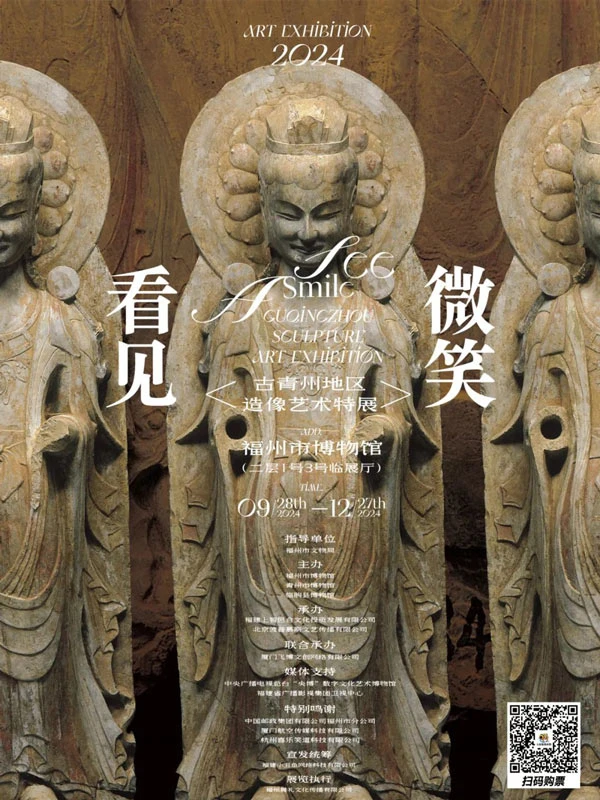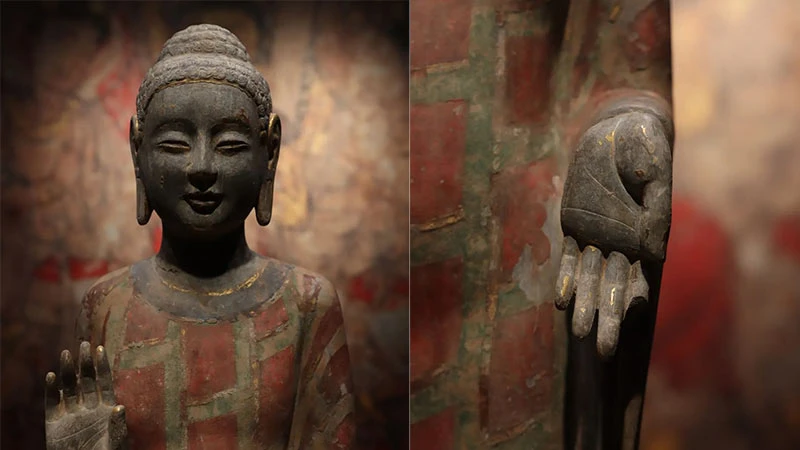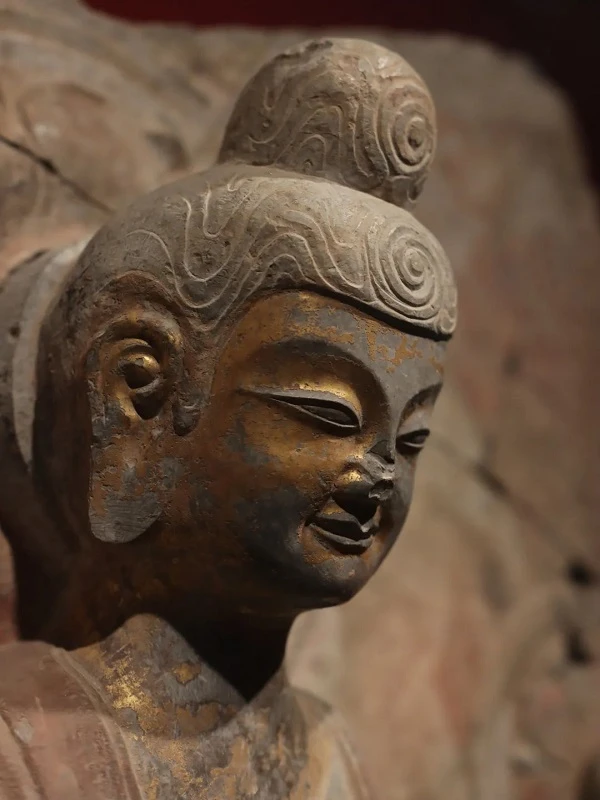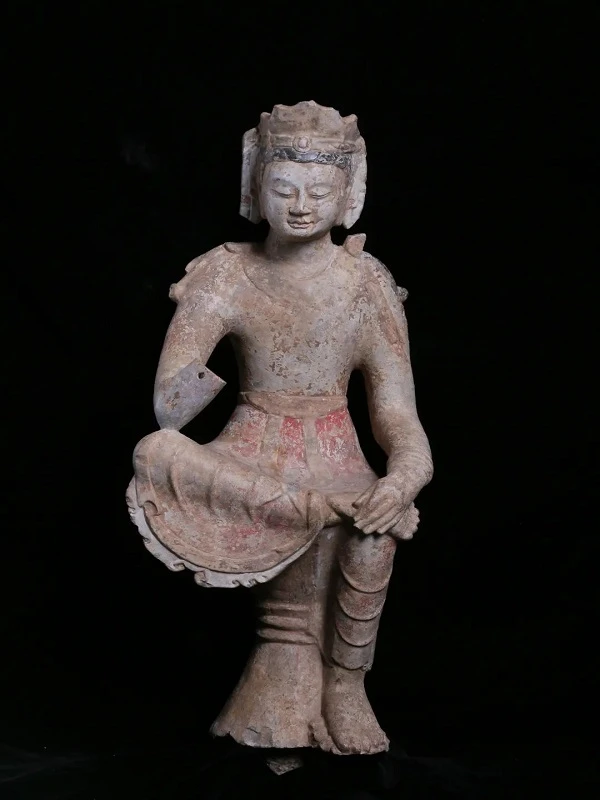In the world of ancient Chinese art, Qingzhou holds a special place for its distinctive Buddhist sculptures, often described as embodying the "Qingzhou style." These timeless works will soon grace the city of Fuzhou, offering art enthusiasts and spiritual seekers a unique glimpse into the history of Buddhist art in China. From September 28 to December 27, 2024, the "Seeing Smiles: Special Exhibition of Buddhist Sculptures from Ancient Qingzhou" will be held at the Fuzhou Museum, giving visitors the opportunity to witness masterpieces that have shaped Eastern art history.

Qingzhou: The Center of Buddhist Artistic Mastery
During the late Han dynasty, Buddhism made its way from ancient India to China, and by the Northern and Southern Dynasties (386–589 CE), the religion had firmly established itself. As it flourished, magnificent Buddhist sites such as the Mogao Caves in Dunhuang and the Longmen Grottoes in Luoyang became legendary for their artistic treasures. However, in the eastern region of China, Qingzhou, located in what is today Shandong Province, became a significant hub for Buddhist art with a unique style of its own.
In 1996, an archaeological discovery at Longxing Temple in Qingzhou brought global attention to this small city. Over 400 Buddhist sculptures were unearthed from a hidden chamber at the temple, many dating from the Northern Wei to the Northern Song dynasties, covering a period of nearly five centuries. These sculptures, carved with exquisite detail and covered in gold and bright pigments, have been hailed as "masterpieces that rewrote the history of Eastern art." This discovery is often included among China's greatest archaeological finds of the 20th century.
The sculptures are known for their serene and often smiling expressions, earning the nickname "the Smiling Buddhas of Qingzhou." The attention to detail in their faces, the gentle curve of their lips, and the softness of their eyes convey an almost otherworldly sense of calm and compassion. Unlike the more rigid and solemn figures seen in other Buddhist traditions, Qingzhou's Buddhas seem to invite viewers into a world of quiet joy and peace.
A Unique Fusion of Cultures and Styles
Qingzhou, one of China's ancient "Nine Provinces," was not only a political and strategic center during the Northern Qi dynasty, but also a prosperous cultural hub. By this time, Buddhism had spread throughout China, and Qingzhou emerged as a major player in the artistic representation of the religion. The region's sculptors developed a distinctive style that reflected both Buddhist themes and local influences.
Most of the sculptures discovered at Longxing Temple belong to the late Northern Dynasties period. The elegance and craftsmanship of these works clearly demonstrate that Qingzhou was at the height of its artistic influence during this era. The distinctive features of Qingzhou Buddhist sculptures, including intricate details and smooth contours, are testimony to the region's vibrant cultural exchange and thriving Buddhist community.
As China transitioned into the Sui and Tang dynasties, the artistic traditions of Qingzhou were absorbed into the broader trends of Chinese Buddhist art. The Qingzhou style gradually influenced the development of a more nationalized, secular form of Buddhist sculpture, spreading across the empire. Qingzhou's sculptures, with their emphasis on human-like warmth and spiritual serenity, played an essential role in shaping this shift.
Fuzhou, the capital of China's southeastern Fujian Province, is a city steeped in history and culture. Nicknamed "The Blessed City" for its strategic location at the junction of mountains, rivers, and the sea, Fuzhou has long been a significant center of trade, culture, and religion. Tracing its history back to 202 BCE, Fuzhou has been a cradle of Minyue culture, with a rich legacy of historical monuments, including the famous Three Lanes and Seven Alleys, the Lin Zexu Memorial, and the Gushan Yongquan Temple.
The upcoming exhibition at the Fuzhou Museum allows this historic city to connect with the ancient wonders of Qingzhou. Visitors will be able to witness some of the finest Buddhist sculptures ever created, offering a direct link to the spiritual and artistic heritage that has been preserved for more than a millennium.
Discovering Qingzhou's Smiling Buddhas in Fuzhou
The "Seeing Smiles" exhibition, hosted at the Fuzhou Museum, will feature an impressive collection of Buddhist sculptures from the Longxing Temple in Qingzhou. This exhibition will showcase not only the famous Smiling Buddhas but also other treasures unearthed from the site, illustrating the artistic achievements and cultural importance of Qingzhou's Buddhist community.
The exhibit will also explore the significance of Qingzhou as a cultural crossroads during the Northern Dynasties, a place where Buddhist art flourished, shaping the development of religious iconography in China for centuries. Through the serene faces of these sculptures, visitors will see how Qingzhou's artisans blended religious devotion with artistic innovation, creating works that continue to inspire awe and reverence.
For those visiting Fuzhou, this exhibition offers a unique opportunity to experience the convergence of two of China's most important historical regions. As the city of Fuzhou welcomes the masterpieces from Qingzhou, the exhibit becomes a bridge connecting different times and places, allowing visitors to contemplate the enduring power of art and spirituality.
The "Seeing Smiles" exhibition is not just an art display; it is a journey through time, culture, and the human experience. The Smiling Buddhas of Qingzhou offer more than aesthetic beauty—they provide a window into a world where art, faith, and humanity intersect. This fall, take a step into Fuzhou's historic museum and immerse yourself in the grace and serenity of these timeless masterpieces. Through the gentle smiles of the Qingzhou Buddhas, visitors can connect with a rich tradition of artistry that has transcended centuries, remaining as powerful today as it was over a thousand years ago.




beautiful